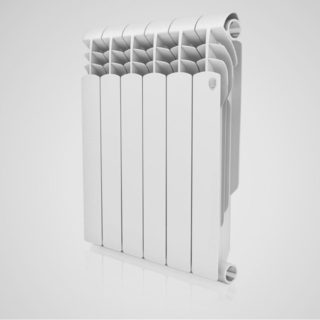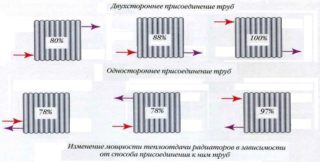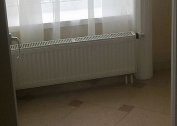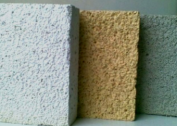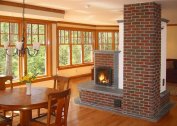Radiator - a heater for dissipating heat in air in the form of radiation or convection. Its characteristics determine how comfortable it will be in the house and how much the user will have to pay for it. Which is better - steel or bimetallic radiators - depends on many factors.
The device of steel radiators
According to the design features, 2 types of batteries are distinguished: tubular and panel.
Tubular consist of a main pipe and ringed ribs soldered onto it. In appearance, they resemble standard cast-iron batteries. The efficiency of the device is not too great. They do not withstand high pressure in the central heating system.
Panel radiators are more efficient. The structure consists of a double steel sheet with horizontal and vertical headers. The panels are welded with a continuous seam. The heat transfer of the model is increased due to the finning from the corrugated sheet. An air outlet grill is located on top of the device, through which heated air enters the room.
Produce models with side and bottom eyeliner. The complete set includes the Mayevsky crane, caps, thermostatic valve.
The effectiveness of the model determines the number of panels - 1, 2 or 3 rows, and the presence of fins. In the marking, the first digit indicates the number of rows, and the second indicates the number of convective plates.
For the manufacture of panel and tubular heaters, sheets of cold rolled steel with a thickness of 0.15 to 1.4 mm are used.
Features of bimetallic radiators
This model is made of 2 metals. Steel is strong, but the level of thermal conductivity is relatively low. It is prone to corrosion and needs protection. Aluminum conducts heat better and is not susceptible to rust, but its mechanical strength is low. The combination of a steel or copper core with an outer layer of aluminum allows you to combine the useful qualities of metals and get rid of the disadvantages.
Bimetallic radiator consists of sections assembled on a thread. In each section there are 2 steel pipes connected by a jumper. An aluminum body is welded to the base using a special injection molding technique. It serves as a heat exchanger. The shape of the case is complex, it includes many ducts to maximize heat transfer.
There are models in which the core is only partially made of steel. The cost of such batteries is 20% lower, but they are less durable and prone to leakage at the joints of steel and aluminum in the core.
Advantages and disadvantages
Each of the heaters has its pros and cons. Steel or aluminum radiators for an apartment or office are chosen after a careful assessment of the parameters.
Steel
The steel panel heater was developed during the energy crisis. It is served by a small volume of water and meets all the requirements for energy conservation. Tubular less economical and not so effective.
Advantages:
- high efficiency - a large work surface provides quick heating of the room;
- easy temperature control due to the small volume of coolant, the heating system can be equipped with automatic regulators;
- working pressure in the system - 9–10 atm;
- concise and strict design;
- ease of maintenance - a smooth surface is easy to wash and paint.
The disadvantages of the model include:
- low resistance to water hammer;
- coolant draining provokes metal corrosion;
- devices are not compatible with some polypropylene pipes.
Steel batteries are chosen when organizing an autonomous heating system. Their popularity is due to the transition to a closed heating scheme as more efficient. In open use is undesirable.
Bimetal
This option combines the positive qualities of steel and aluminum. Its heat transfer is lower than that of aluminum by 20%, but almost 2 times higher than that of iron. However, it is necessary to decide which radiators are better - steel or bimetallic - after evaluating other features.
Advantages of the 2-metal model:
- high heat dissipation;
- low sensitivity to impurities in water - corrosion does not threaten bimetal radiators;
- weak thermal inertia;
- resistance to high pressure - the operating indicator is 25 atm, the battery can withstand water hammer up to 60 atm;
- the devices are lightweight, which simplifies installation;
- durability - the factory warranty for the product is 20 years.
Disadvantages:
- the cost is 15–40% higher than other heating appliances;
- if oxygen enters the system, the alloy quickly rusts;
- in poor-quality products, leakage at the junction of aluminum and steel is possible.
Installation of bimetallic batteries is simple, but requires great accuracy. If the core of the device is durable, then the aluminum case is easy to bend and damage during rough handling.
Comparison of the characteristics of steel and bimetallic radiators
To decide whether to install a steel or aluminum radiator in a private house, the most important indicators of devices are compared. The negative sides of the heaters should also be evaluated.
Heat dissipation
The efficiency of a bimetallic radiator is 2 times higher than steel. With a section width of 500 mm and a coolant temperature of 70 C, the power of the combined heater reaches 199 W, and that of steel - only 85 W.
Corrosion resistance
The weakest element of both designs is steel. In conditions of central heating, when water is drained from the batteries in spring, it makes both devices equally vulnerable.
Bimetal is more resistant to external influences: aluminum forms an oxide film in air, which protects it from corrosion. Steel products rust quickly if the paintwork is damaged. Batteries need to be colored periodically.
Life time
The life of steel radiators is 15–20 years. In humid rooms it is reduced to 10.
Bimetal protects the top layer of aluminum. The product lasts up to 40 years, not inferior in durability to cast-iron batteries.
High pressure
An important difference between steel panel radiators and bimetal radiators is pressure resistance. Although the steel is stronger, the allowable working pressure is 6 atm. This is higher than that of aluminum heaters, but noticeably less than that of bimetal heaters - 25 atm.
Tubular steel appliances withstand pressure up to 16 atm. They are more adapted to central heating.
The battery connection method is the same - threaded couplings. Steel elements are attached to each other, this ensures reliable contact. However, bimetallic radiators weigh less, which simplifies installation.

